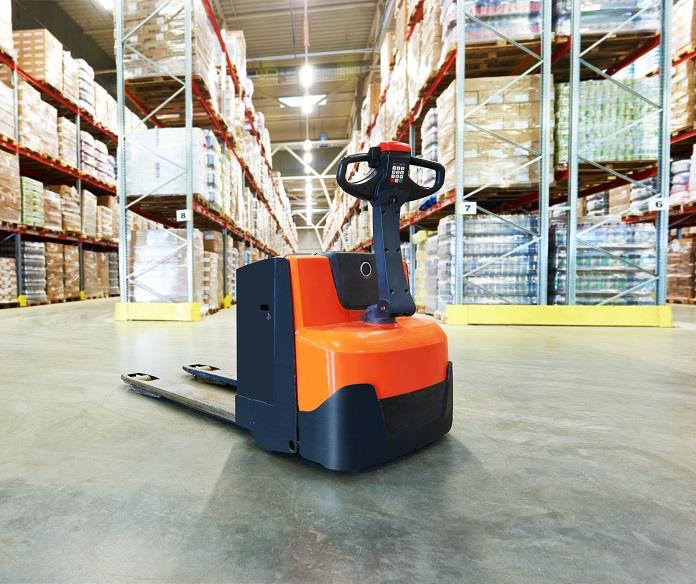
WHAT TO KNOW ABOUT WALKIE AND WALKIE RIDER PALLET TRUCKS
There are two types of powered pallet trucks also known as powered pallet jacks. A Walkie Pallet Truck is electric powered and the operator walks behind the machine when operating it. A Walkie Rider Pallet Truck is electric powered and the operator ‘rides’ the equipment when operating it. These machines are commonly used in warehouses, distribution centers, manufacturing and food and beverage operations and are designed to allow the operator to make long trips with pallets throughout the facility and can easily accommodate multiple stops.
While these machines are designed for effective indoor use as a low-level lift truck and pallet mover, they can be extremely dangerous. While many walkie pallet truck operators are comfortable using this equipment and understand how they operate, accidents can still happen.
Almost every walkie/walkie rider pallet truck accident is preventable. The overwhelming cause of accidents is human error and the easy operation of this equipment is something that’s often taken for granted. When this the comfortable attitude or complacency sets in, it’s here where the majority of incidents causing personal injury or property damage are highest.
If companies actively follow proper walkie pallet truck safety procedures and ensure all its operators are properly trained, it will significantly reduce the chances of having an accident.
Both theory and practical operator training is required before working with this equipment. Any training program must be compliant with CSA Standard B335-15 for Lift Trucks which identifies the knowledge, practical skills and evaluation requirements needed by lift truck operators. The practical evaluation requires lift truck operators to demonstrate competency skill level equal or greater to the industry accepted measurements. The program must also comply with the Occupational Health & Safety Act of Ontario, REGULATION 851. INDUSTRIAL ESTABLISHMENTS as it pertains to lift truck safety.
Some general safety rules to follow are:
– Work in compliance with your provincial Occupational Health and Safety Regulations
– Read and follow your employer’s procedures for Health and Safety
– Read and follow any equipment Operator’s and Manufacturer’s Manual
– Wear proper Personal Protective Equipment (PPE)
– Adhere to equipment lifting capacity information and warning signs
– Conduct pre-shift inspections, pre-start up inspections, visual inspections
– Report the absence or defect in any equipment or protective device
– Test all equipment functions to ensure proper working condition
– Avoid hazardous situations, steep slopes, grades and drop offs
– Use the equipment for what is was intended and designed for
– Ensure you are properly trained and authorized to use the equipment
Other walkie pallet truck equipment safety tips:
– Confirm that the battery is fully charged before operating. The amperage gauge will display the charge capacity or indicate the percentage of battery life remaining. A low charge can cause the machine to stop during operation and you may be far away from your charging station. This can cause unnecessary downtime and involve more people or equipment, which can result in higher risk of accidents.
– Test operate the power features on the machine such as fork lifts and fork spacings. Confirm all electric controls are operating, and the walkie pallet truck can turn properly. Conduct a general inspection of overall condition and record and report any deficiencies to your supervisor. If any serious defects are discovered, you must tag the walkie pallet truck as “out of service†and make arrangements for the necessary repairs.
– Confirm all electric safety devices are working properly. Locate the emergency shut-off or kill switches and confirm they are working. These safety devices will prevent equipment overload or equipment breaking free if the operator falls off.
– Test the horn, backup warning devices, the brakes and ensure wheel chocks are nearby for secure parking.
– Test operate the forward, neutral and reverse controls. Make sure all work smoothly and properly before using this equipment.
– Remember to always shut off the electrical supply when storing a powered walkie pallet truck. It should be plugged into a recharge portal to make ready for its next operation.
Visit our Walkie/Walkie Rider web page for more training information, call us at 905 672-3600 or contact us at: [email protected]
Recent Blogs
- Industrial Lift Equipment Training
- Forklift Facts
- Workplace Harassment Prevention
- Reach Forklift Training Richmond Hill
- Aerial Lift Platform Training
- Counterbalance Forklift Training in Ontario: Boost Safety and Compliance with Safety First Training
- Counterbalance Forklift Training Whitby
- Confined Space Training
- Forklift Operator Training in Ontario
- FLT Training, Certification & Licence: Your Complete Guide
- Electric or Propane Counterbalance
- WHMIS Training and Certification in Oakville
- Counterbalance Forklift Training Ajax
- WHMIS Training and Certification in Whitby
- 4 DIRECTIONAL REACH FORKLIFT TRAINING
- Spill Response Training Scarborough
- Counterbalance Forklift Training Hamilton
- SWING REACH TURRET TRUCK TRAINING
- Spill Response Training Vaughan
- Bucket Truck Training in Ontario

